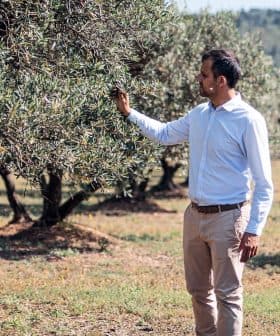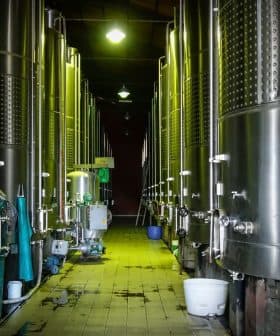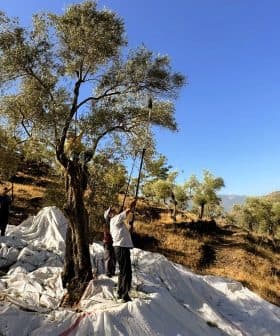Low Harvest, Rising Production Costs Continue to Plague Argentina
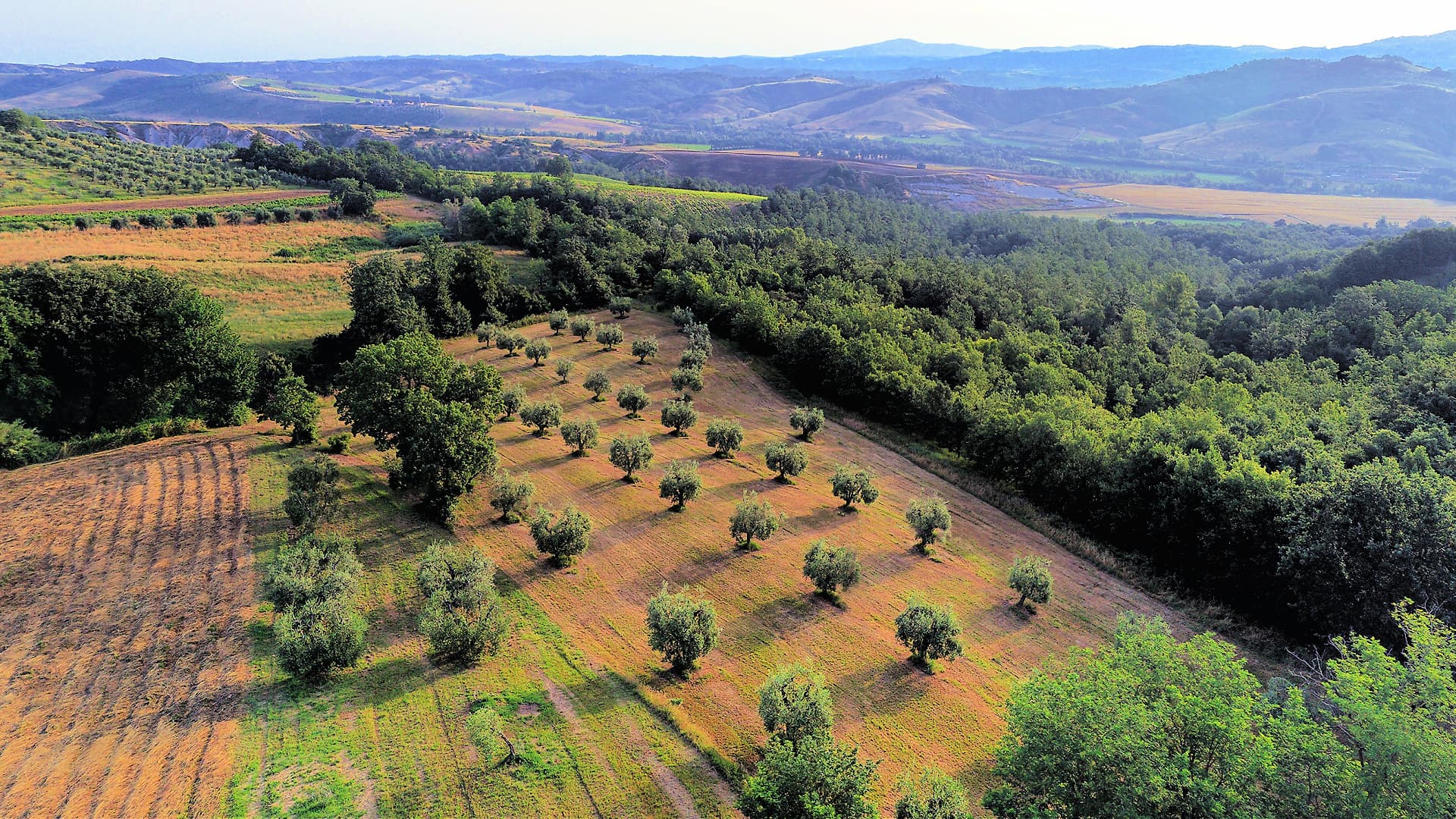
The 2025 harvest in Argentina is expected to yield around 27,500 metric tons of olive oil, with varying impacts across different regions due to adverse weather conditions. Rising production costs and lower export prices have created economic challenges for producers, who are looking to diversify into new markets like Asia to offset losses from other regions.
Producers in Argentina are in the midst of the 2025 harvest, with this year’s crop estimated to reach approximately 27,500 metric tons.
According to data from the Argentine Olive Federation shared with Olive Oil Times, the largest producing country outside the Mediterranean basin yielded approximately 35,000 tons of olive oil in 2024 (significantly higher than the preliminary estimate) and a record-high 44,000 tons in 2023 (also higher than initial estimates).
While production varied from region to region, producers in San Juan and La Rioja, responsible for the majority of Argentine olive oil, reported that adverse weather events, including a cold snap in May 2024, damaged trees in the northwestern provinces.
See Also:Argentina’s San Juan Province Gets Geographic Indication for Olive Oil“We recently completed the harvest, and unfortunately, the overall balance was not positive,” said Jeder Aleua, the head of olive oil production at La Rioja-based Fincas de Cruz del Eje. “During the flowering stage, we faced adverse weather conditions such as hail, hot winds and extreme temperatures, which severely affected flower set.”
“The flowers that managed to develop showed good growth, but with low oil content due to the limited temperature range. This translated into an average oil yield of approximately 12 percent, a figure lower than expected,” he added. “Despite this situation, we managed to obtain good quality oil, thanks to meticulous work and care at every stage of the process.”
Additionally, declining olive oil prices at origin in Europe, combined with rising production costs in Argentina and higher table olive prices, led producers to divert dual-purpose varieties to table olives for export.
“There isn’t going to be much oil in Argentina this year,” said Julián Clusellas, the president of La Rioja-based Valle de la Puerta. “The harvest was very short, and almost everything that could be was diverted for table olives.”
He added that in the company’s groves, frosts in May 2024 damaged the buds that later become flowers and then olive drupes, especially in the lower parts of the trees.
In neighboring San Juan, Solfrut commercial director Guillermo Kemp also confirmed that this year’s harvest would fall short of previous ones.
“We continue working on short campaigns, and starting earlier and earlier, to avoid climatic factors [such as late autumn frosts] and, of course, to produce the best quality oils that can be obtained,” he said.
Further south in Mendoza, producers reported a better harvest this year than the previous one.
“On our farm, we had an average harvest. One farm had very good production, while the other was slightly affected by frost,” said Miguel Zuccardi, the head of olive oil production at Familia Zuccardi.
“We had to start harvesting a little later this year because we had a warm fall and delayed our plans to avoid the high temperatures,” he added.
Meanwhile, in the central province of Córdoba, situated about halfway between Mendoza and Buenos Aires, Sierra Pura president Veronica Ortega said the region experienced a significantly higher harvest than in 2024.
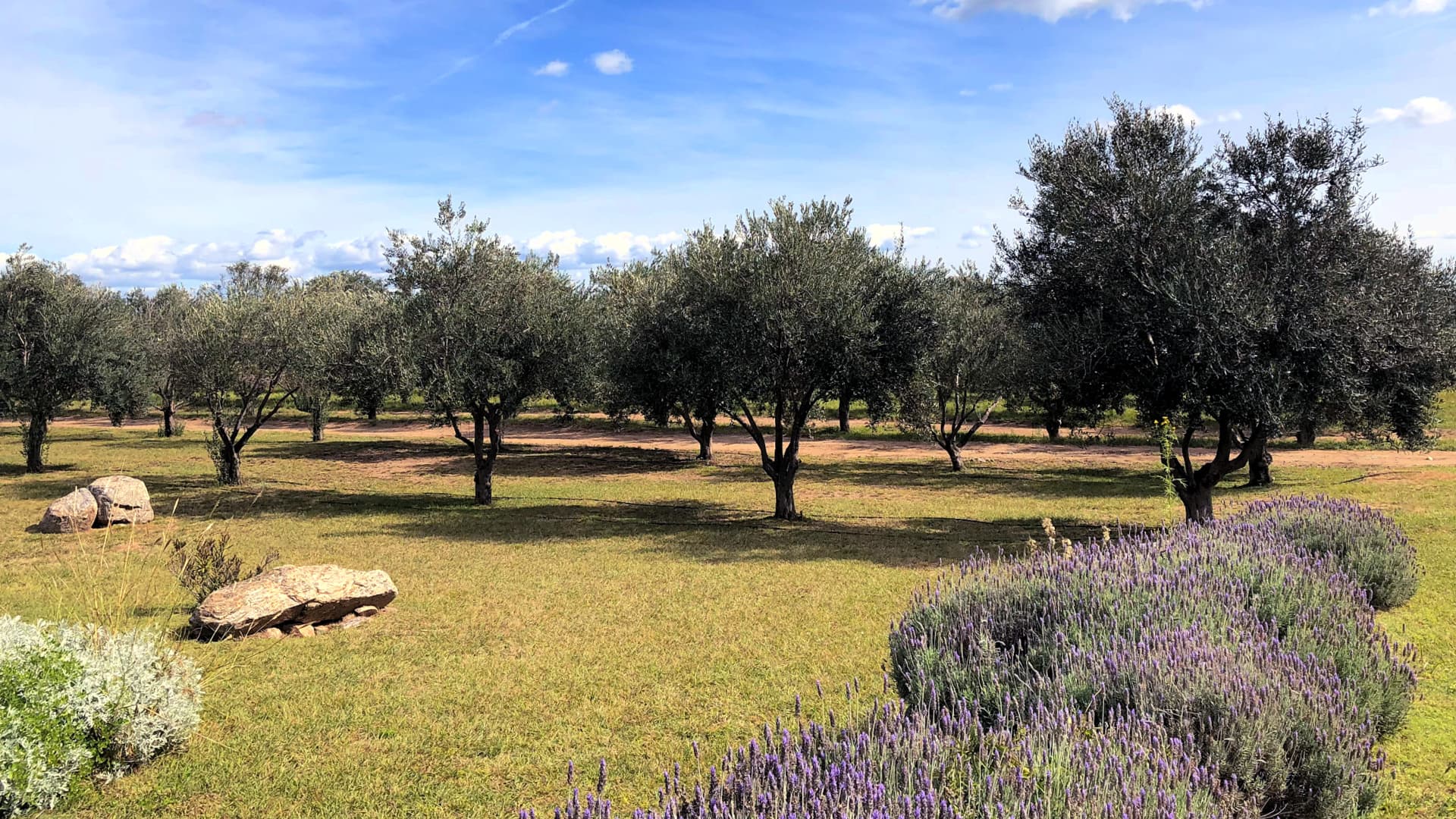
Most of Argentina’s olive oil production is centered in the Andes foothills, but Córdoba and Buenos Aires also have modest olive groves. (Photo: Sierra Pura).
“We recorded a 50 percent increase in harvest volume compared to the 2024 campaign,” she said. “However, some climatic factors, such as the lack of the first cold spells in May and late summer rains, caused a slight delay in the ripening of certain olive varieties, which extended the harvest period into June.”
“Not only did total production increase, but we also managed to harvest varieties such as Frantoio, Farga and Barnea with outstanding organoleptic quality,” she added.
Away from economic issues, Ortega said her main challenge was determining the optimal moment to harvest the olives, striking a delicate balance that maximizes oil yield while preserving the organoleptic characteristics.
“We had to balance the need to start the harvest early — due to the volume of fruit available — with the importance of waiting for the perfect ripening period to obtain an oil with the flavor, aroma and nuances that distinguish us,” she said. “Despite these challenges, the 2025 harvest results are extremely positive.”
Expectations of a lower harvest arise as producers across Argentina face significant economic hardship, driven by rising production costs and lower prices for exports to Europe.
Since President Javier Milei assumed office in December 2023, his administration has slashed government spending in a bid to lower the country’s triple-digit inflation rate and the deficit.
Energy subsidies were among the cuts made by the government, resulting in an increase in electricity and fuel prices.
While producers approved of separate government efforts to loosen restrictions on imports, such as fertilizer and bottles, and the repatriation of foreign currencies, the effects of these measures have been canceled out by the falling prices at origin.
“Olive oil prices at €3,600 per ton are not profitable considering electricity costs [to power irrigation systems] of about $900 (€780) per hectare and an overall operating cost of around $4,000 (€3,500) per hectare,” Clusellas said.
Zuccardi added that prices for electricity and fuel have risen faster than inflation, which continues to decelerate, and government efforts to devalue the Argentine peso from its artificially high rate.
Despite rising costs, some producers said the government’s economic policies have created more certainty.
“The stability of input prices was a positive factor that allowed us to plan the harvest with greater predictability,” Ortega said.
Mario Bustos Carra, the director-general of the Mendoza-based Cuyo Chamber of Foreign Trade, added that the changes will be good for producers in the long term, but there will be significant short-term headwinds.
“The first challenge is addressing costs, which are offset by tax pressures, labor costs, high input prices, lack of labor to harvest the crops, etc.,” he said.
“Furthermore, in olive oil, good European production has contributed to the drop in international prices,” Bustos Carra added. “Since Argentina is not a price-setter, we must adapt to the figures handled by the main producing countries, which have stable economies, strong currencies and, fundamentally, favorable economic policies, including subsidies.”
While challenges mount at home, some producers and exporters agreed that the prevailing trade policy in the United States may provide a competitive advantage for Argentine olive oil in the world’s second-largest olive oil consumer market.
Even as U.S. President Donald J. Trump announced a ten percent tariff on Argentine imports as part of his wider tariff policy, Clusellas said it was business as usual with his American clients.
“I think the situation is going to improve and we will see more demand for Argentine olive oil” in the U.S., Clusellas said.
The Trump administration’s tariff policy has been erratic, but Argentine olive oil exporters have never faced the prospect of more than the “baseline” ten percent tariff.
Exporters from Tunisia and European Union countries, on the other hand, currently have the same ten percent tariff, but could face significantly higher rates if they cannot reach a deal with the U.S.
Kemp, from Solfrut, confirmed that under the original or revised tariff regimes of 28 percent on Tunisia and 20 to 50 percent on the European Union, Argentine exporters would benefit, but American consumers might not.
“I think [tariffs] make the product more expensive for the U.S. consumer,” he said. “The issue is to see how the final policy looks.”
Similarly to Clusellas, Zuccardi said his company has not felt the impact of the tariffs. He expects that slightly higher prices will not deter most consumers seeking higher-quality extra virgin olive oil.
Bustos Carra said the first signs of changing policy in the U.S. toward Argentina date back to the suspension of the generalized system of preference for certain products, including olive oil, but he is optimistic that Milei’s personal relationship with Trump will result in a deal for Argentina.
“Because our country was the first to request a review of tariffs in response to the new measures adopted, we are optimistic that, both due to political affinity and as a consequence of the unilateral policy pursued by the United States, we may gain some comparative advantages over other countries,” he said.
Aleua added that Fincas de Cruz del Eje was continuing to assess the situation around U.S. tariffs and continuing its efforts to enter new markets.
“When a market closes, new opportunities also open up,” he said. “The Asian market, for example, represents a distant but extremely interesting destination, and that’s where we’re focusing part of our future strategy.”




